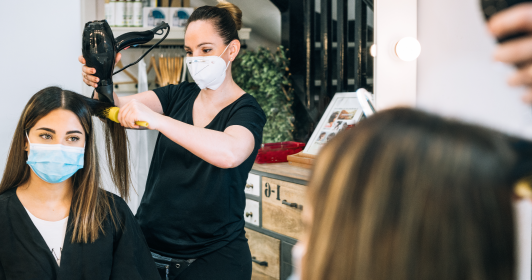
Glutes: Booty is on my mind!
, by Felicia Romero, 2 min reading time

, by Felicia Romero, 2 min reading time

Glutes are one of the most sought after body parts and, quite honestly, the hardest to shape. Genetics play a huge role but with time, consistency and dedication you can fight genetics. For most people, the biggest problem with toning and tightening this area of the body is lack of muscle control and getting rid of the fat layer that sits on top of the muscle. Diet and fat-burning exercises are the keys to losing unwanted inches. Getting your glutes to respond to exercise requires that you understand the muscles.
The next important step is to learn to control the muscles while exercising. The buttocks are comprised primarily of muscles, although many would argue that their rear ends are completely loaded with just fat. This becomes a main issue for many women since the body chooses to store fat in the area of the buttocks. Eventually, your body can store so much fat in that area it would appear to look like cottage cheese (cellulite). This type of fat is very resistant to diet and exercise, but over a period of time, it is possible to remove cellulite from the body almost completely.
It is also very important to recognize that the body does not "spot reduce." The exercises listed on the next page will tone and tighten the muscles, but you will have to lose body fat overall, including your gluteal area, to achieve your butt-tightening, backside-toning goals.
It's pointless to start to begin exercising until you can completely control your gluteal muscles.
The main muscles of the buttocks are the gluteus maximus, medius and minimus. These are the three primary muscles, although there are other muscles in this area that are also worth considering. The deep obturators, buried deep under the surface, the piriformis muscle (often associated with sciatic pain) and the quadratus femoris.
It is important to learn how to control the buttock muscles - beginning right now! While you are reading this article, start squeezing your buttocks together. That's right; while you are sitting there, start flexing your butt muscles. Try to flex the right side and then the left. Do you have control yet? It's pointless to start to begin exercising until you can completely control those glutes.
Learning how to flex the gluteal muscles while you use them will enhance any exercise and result in the use of more muscle fibers. That means faster results. Recruiting more muscle fibers provides a greater response to the stimulus. For some people, this flexing is easy and natural; for others, it is a constant battle.
In addition to flexing and strength training, mixing in some exercises during cardio is a great way to tighten up the buttocks and make the muscles respond faster than by simply walking on a treadmill. For example, follow every five minutes of cardio with 50 deep-knee squats. It's simple, but effective; it mixes up the cardio and forces more muscle stimulus to the buttocks area.
Read Felicia's Top 5 Glute Exercises »


![PRōZE Review [2020 Update]](http://hihealth.com/cdn/shop/articles/cbd_insider_article_graphic_featured_image-11.jpg?v=1591495027)